OK, so I ended up going down a pretty different road on this. I have implemented a simple discretization of the integral equation which defines the renewal function:
m(t) = F(t) + integrate (m(t - s)*f(s), s, 0, t)
The integral is approximated with the rectangle rule. Approximating the integral for different values of t gives a system of linear equations. I wrote a function to generate the equations and extract a matrix of coefficients from it. After looking at some examples, I guessed a rule to define the coefficients directly and used that to generate solutions for some examples. In particular I tried shape = 2, t = 10, as in OP's example, with step = 0.1 (so 101 equations).
I found that the result agrees pretty well with an approximate result which I found in a paper (Baxter et al., cited in the code). Since the renewal function is the expected number of events, for large t it is approximately equal to t/mu where mu is the mean time between events; this is a handy way to know if we're anywhere in the neighborhood.
I was working with Maxima (http://maxima.sourceforge.net), which is not efficient for numerical stuff, but which makes it very easy to experiment with different aspects. At this point it would be straightforward to port the final, numerical stuff to another language such as Python.
Thanks to OP for suggesting the problem, and S. Pappadeux for insightful discussions. Here is the plot I got comparing the discretized approximation (red) with the approximation for large t (blue). Trying some examples with different step sizes, I saw that the values tend to increase a little as step size gets smaller, so I think the red line is probably a little low, and the blue line might be more nearly correct.

Here is my Maxima code:
/* discretize weibull renewal function and formulate system of linear equations
* copyright 2020 by Robert Dodier
* I release this work under terms of the GNU General Public License
*
* This is a program for Maxima, a computer algebra system.
* http://maxima.sourceforge.net/
*/
"Definition of the renewal function m(t):" $
renewal_eq: m(t) = F(t) + 'integrate (m(t - s)*f(s), s, 0, t);
"Approximate integral equation with rectangle rule:" $
discretize_renewal (delta_t, k) :=
if equal(k, 0)
then m(0) = F(0)
else m(k*delta_t) = F(k*delta_t)
+ m(k*delta_t)*f(0)*(delta_t / 2)
+ sum (m((k - j)*delta_t)*f(j*delta_t)*delta_t, j, 1, k - 1)
+ m(0)*f(k*delta_t)*(delta_t / 2);
make_eqs (n, delta_t) :=
makelist (discretize_renewal (delta_t, k), k, 0, n);
make_vars (n, delta_t) :=
makelist (m(k*delta_t), k, 0, n);
"Discretized integral equation and variables for n = 4, delta_t = 1/2:" $
make_eqs (4, 1/2);
make_vars (4, 1/2);
make_eqs_vars (n, delta_t) :=
[make_eqs (n, delta_t), make_vars (n, delta_t)];
load (distrib);
subst_pdf_cdf (shape, scale, e) :=
subst ([f = lambda ([x], pdf_weibull (x, shape, scale)), F = lambda ([x], cdf_weibull (x, shape, scale))], e);
matrix_from (eqs, vars) :=
(augcoefmatrix (eqs, vars),
[submatrix (%%, length(%%) + 1), - col (%%, length(%%) + 1)]);
"Subsitute Weibull pdf and cdf for shape = 2 into discretized equation:" $
apply (matrix_from, make_eqs_vars (4, 1/2));
subst_pdf_cdf (2, 1, %);
"Just the right-hand side matrix:" $
rhs_matrix_from (eqs, vars) :=
(map (rhs, eqs),
augcoefmatrix (%%, vars),
[submatrix (%%, length(%%) + 1), col (%%, length(%%) + 1)]);
"Generate the right-hand side matrix, instead of extracting it from equations:" $
generate_rhs_matrix (n, delta_t) :=
[delta_t * genmatrix (lambda ([i, j], if i = 1 and j = 1 then 0
elseif j > i then 0
elseif j = i then f(0)/2
elseif j = 1 then f(delta_t*(i - 1))/2
else f(delta_t*(i - j))), n + 1, n + 1),
transpose (makelist (F(k*delta_t), k, 0, n))];
"Generate numerical right-hand side matrix, skipping over formulas:" $
generate_rhs_matrix_numerical (shape, scale, n, delta_t) :=
block ([f, F, numer: true], local (f, F),
f: lambda ([x], pdf_weibull (x, shape, scale)),
F: lambda ([x], cdf_weibull (x, shape, scale)),
[genmatrix (lambda ([i, j], delta_t * if i = 1 and j = 1 then 0
elseif j > i then 0
elseif j = i then f(0)/2
elseif j = 1 then f(delta_t*(i - 1))/2
else f(delta_t*(i - j))), n + 1, n + 1),
transpose (makelist (F(k*delta_t), k, 0, n))]);
"Solve approximate integral equation (shape = 3, t = 1) via LU decomposition:" $
fpprintprec: 4 $
n: 20 $
t: 1;
[AA, bb]: generate_rhs_matrix_numerical (3, 1, n, t/n);
xx_by_lu: linsolve_by_lu (ident(n + 1) - AA, bb, floatfield);
"Iterative solution of approximate integral equation (shape = 3, t = 1):" $
xx: bb;
for i thru 10 do xx: AA . xx + bb;
xx - (AA.xx + bb);
xx_iterative: xx;
"Should find iterative and LU give same result:" $
xx_diff: xx_iterative - xx_by_lu[1];
sqrt (transpose(xx_diff) . xx_diff);
"Try shape = 2, t = 10:" $
n: 100 $
t: 10 $
[AA, bb]: generate_rhs_matrix_numerical (2, 1, n, t/n);
xx_by_lu: linsolve_by_lu (ident(n + 1) - AA, bb, floatfield);
"Baxter, et al., Eq. 3 (for large values of t) compared to discretization:" $
/* L.A. Baxter, E.M. Scheuer, D.J. McConalogue, W.R. Blischke.
* "On the Tabulation of the Renewal Function,"
* Econometrics, vol. 24, no. 2 (May 1982).
* H(t) is their notation for the renewal function.
*/
H(t) := t/mu + sigma^2/(2*mu^2) - 1/2;
tx_points: makelist ([float (k/n*t), xx_by_lu[1][k, 1]], k, 1, n);
plot2d ([H(u), [discrete, tx_points]], [u, 0, t]), mu = mean_weibull(2, 1), sigma = std_weibull(2, 1);

